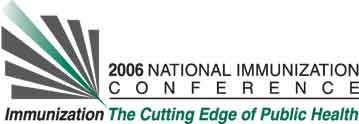Catheryn W. Mellinger, Dawn Ginzl, Aimee Pragle, Darci Lolley, and Dr. Joann Schulte. Bureau of Immunization, Florida Department of Health, 4042 Bald Cypress Way, Bin A-11, Tallahassee, FL, USA
Learning Objectives for this Presentation:
By the end of the presentation the participants will be able to identify effective strategies for increasing knowledge of pertussis identification and treatment.
By the end of the presentation the participants will be able to describe barriers to outbreak investigation after a hurricane.
By the end of the presentation the participants will be able to describe steps for successful field investigation during a natural disaster.
Background:
Hurricane Ivan hit the Florida Panhandle September 2004 disrupting public health activities. Santa Rosa County data reflected seven pertussis cases from July-September 16, 2004. Identification of Bordetella pertussis in a infant that home-sheltered led staff to an extensive investigation. Interviews and laboratory testing identified 23 pertussis cases: 7 culture confirmed, 8 epidemiological linked, 8 probable. Onset dates of confirmed cases were from May to October with median age of 13.
Setting:
Major settings were: daycare, school, church and a home where multiple families sheltered. Public and private medical facilities provided testing, prophylaxis and treatment.
Population:
Residents and medical providers in communities impacted by Hurricane Ivan experienced a pertussis outbreak.
Project Description:
Investigation provided an opportunity to improve epidemiological preparedness strategies. Parents/families were interviewed in multiple locations. Health department, school personnel, private providers, laboratories and hospitals coordinated educational, diagnostic and treatment efforts to establish pertussis control measures and increase knowledge in the proper identification & treatment of pertussis.
Results/Lessons Learned:
The public health system established procedures in the event a natural disaster and an outbreak investigation occur simultaneously. Barriers created by this natural disaster required unique approaches to disease investigation, control and outreach to providers. Lessons learned demonstrate the value of a collaborative team of individuals to assist county health departments with epidemiological functions during hurricane response. Hurricane damage led to self and naturally imposed quarantine of infectious persons breaking the chain of communicability, effectively ending the pertussis outbreak.
See more of Posters
See more of The 40th National Immunization Conference (NIC)

